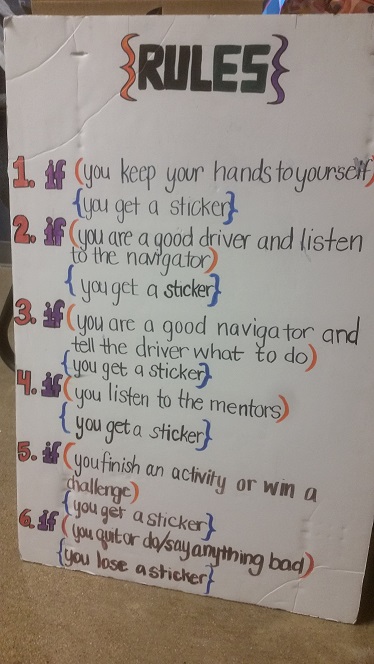Team Expectations Chart Activity
From Bold Idea Knowledgebase
Contents
Possible Materials
- Posters (1 per team)
- Markers
- Dry erase board
- Dry erase markers
Activity Instructions
Basic Chart
- This activity is best done during the second session when students have had experience working together.
- Start the activity by explaining the purpose of a team expectations chart. A team expectations chart holds the student accountable for their actions, especially when the students come up with the expectations. They promote appropriate student behavior, prevent student misbehavior and create a sense of order during the sessions. Ask students how they would like to be treated, how the mentors should be treated, and even how the laptops and classroom should be treated.
- Give the students some ideas of potential expectations. This will help the students better understand what the chart might look like. Brainstorm a list and narrow it down to the 5-7 expectations that best fit the team. Having too many expectations can be overwhelming and disruptive.
- Write the list of expectations on the poster before the next session or type up the list and make copies for each student and mentor. This chart should be used for the whole semester. Keep it in a place students can see each week or hand students a copy to place in their folders.
- Students and mentors should sign the bottom of the list. It's like a contract!
- You have the option to make amendments to the expectations if the team thinks of something new that should be added later in the semester.
Chart Using Conditional Statements
Upon the mentor's discretion, the same team expectations chart can be made by using conditional statements. This will require some explanation of if/then/else conditions. Example: If the student is a good navigator, then he gets a sticker. Else, he does not get a sticker.
Example Expectations
This is an example that was used with 1st grade students, who needed a positive reinforcement with stickers or candy. This may not be as appropriate for older ages.
- Follow pair programming rules.
- Participate in a group activity at least once per session.
- Not be afraid to try new things.
